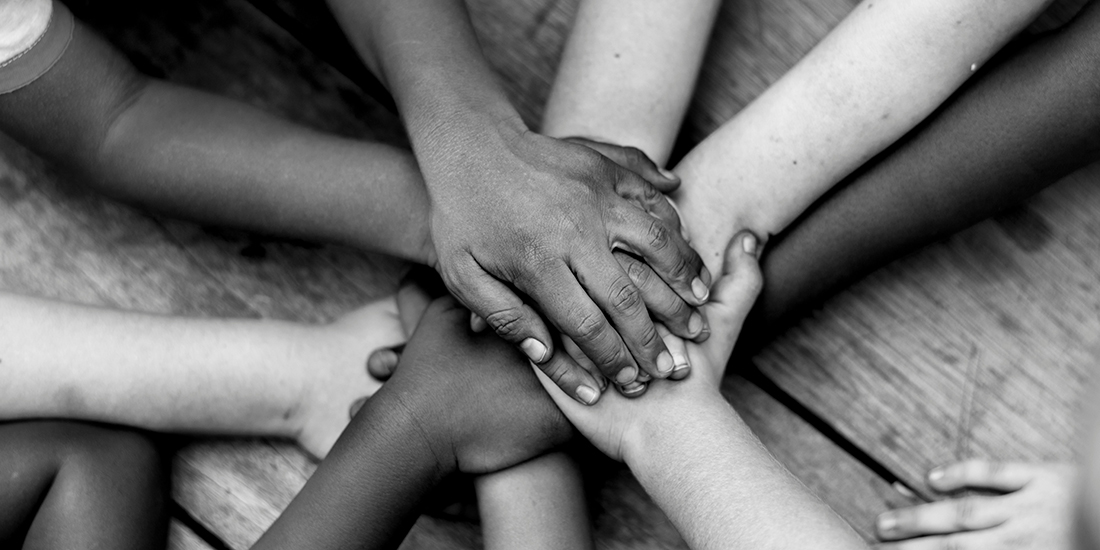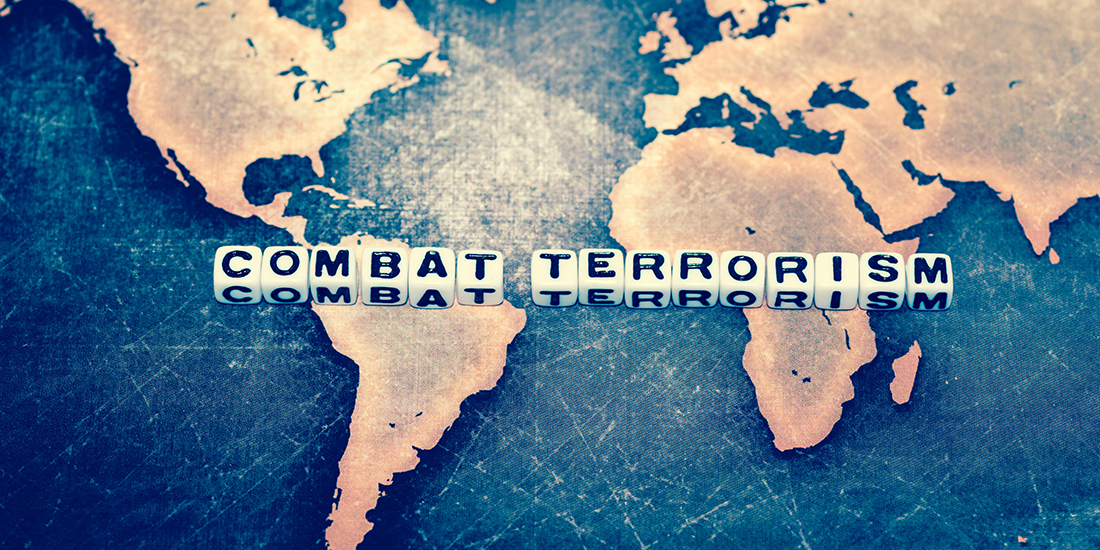Most recently published

National Laboratory Partnerships: Linking Operations and Research
Ryan Eddy and Ann Lesperance
September 25, 2024
The September 11 terrorist attacks in 2001 spurred a pivotal change in the way the U.S. approaches preparedness for threats to the homeland. In recognition of National Preparedness Month, the Pacific Northwest National Laboratory showcases how national laboratories address homeland security threats by developing the technology and other resources first

Responder Fatigue: A Growing Concern
Dan Scherr and Tanya M. Scherr
September 18, 2024
Emergencies require immediate action by people trained to extinguish fires, treat injuries, protect the public, and perform other life and safety tasks. Responders who repeatedly encounter high-stress scenarios may face additional life and safety concerns in the form of fatigue. Learn about three types of fatigue and how to combat

Crisis Communications: Reaching Teens and Young Adults
Barrett Cappetto
September 18, 2024
Generation Z and millennials encompass almost half of the world’s population, and their communication style, preferences, and ideals differ from those of their older counterparts. Crisis communication plans must account for these differences to reach that demographic. Navigating these variations helps ensure that alerting organizations’ efforts are well-received and effective.

AI and 911 Call Systems: A New Ally or a Hidden Risk?
Michael Breslin
September 11, 2024
From natural disasters to sophisticated cyberthreats, the risks to public safety are evolving fast. As unexpected events can strike at any moment, the systems designed to protect people – 911 call centers – face unprecedented challenges. Artificial intelligence (AI) is changing the landscape by increasing efficiencies and risks. Learn about

Security in and Around D.C.: Following the Informational Dots
Catherine L. Feinman
September 11, 2024
Preparing for any special event includes many unknowns. When an event involves national security, the stakes are even higher. Public safety agencies have been sharing their lessons learned and providing recommendations to prepare the nation for the upcoming election events. Read some of the takeaways they shared at the D.C.

National Preparedness Month 2024: Talk About It
Ian Pleet
September 4, 2024
Each September, communities across the United States reexamine their preparedness goals and resources during National Preparedness Month. By educating and empowering individuals and families to prepare for emergencies, communities can be better positioned to face any disaster. In 2024, the Federal Emergency Management Agency urges people to “Start a Conversation”

Community Engagement – Strength in Numbers
Catherine L. Feinman
August 28, 2024
When community leaders in emergency preparedness, response, and recovery invest in engagements with community members, the return on investment can be measured in lives, properties, and money saved. The authors in this August edition of the Domestic Preparedness Journal describe ways to strengthen the entire community against known and not-yet-known

Vulnerability and Exploitation: Human Trafficking After Natural Disasters
Benjamin Thomas Greer and Nathan DiPillo
August 28, 2024
Disasters inherently come with known and unknown threats. One looming emerging threat is human trafficking because traffickers capitalize on the vulnerability these events create to exploit victims. However, when properly trained, emergency management and disaster responders are uniquely positioned to identify, prevent, and mitigate exploitation before and after an emergency.

Dual-World Tabletop Exercises: Addressing Unmet Infrastructure Needs
Charles (Chuck) L. Manto
August 21, 2024
The U.S. critical infrastructure is vulnerable to many forms of cyber and electromagnetic threats. This article presents a new tabletop exercise concept for addressing these ongoing threats to critical infrastructure. Similar to medical research groups that involve treatment and control groups, two exercise groups would work simultaneously on the same

Realizing the Power of Community in Disaster Recovery
Aaron Clark-Ginsberg
August 21, 2024
No two communities are the same. Each community has unique vulnerabilities, capacities, and needs, and each has its own leaders, areas of cooperation, and areas of disagreement. Understanding these factors and building on the community’s strengths are critical steps in disaster recovery.

Return on Investments in Public Engagement
June Isaacson Kailes
August 14, 2024
Public engagement and participation involve community members in problem-solving, decision-making, and policy development. This article shares some new practices for creating actionable opportunities for key stakeholders to participate in decisions that affect their communities. Result-centered engagement can help protect people with disabilities and other community partners from many adverse impacts

Bridging Preparedness: State Medication Reserves for Pandemics and Beyond
Angie Im
August 14, 2024
New human cases of highly pathogenic avian influenza have been confirmed in the United States. Although most cases like this do not escalate to pandemic status, it is critical that communities be better prepared than they were for COVID-19. However, one study shows that preparedness gaps may hinder these efforts.

Thwarting Terrorist Threats at Home
Richard Schoeberl
September 25, 2024
Although the U.S. has not experienced another terrorist attack like the one on September 11, 2001 (9/11), the threat remains. In fact, the Federal Bureau of Investigation has warned that the danger of an Islamic extremist-inspired terrorist attack inside the country is at the highest point since 9/11. Learn how

National Laboratory Partnerships: Linking Operations and Research
Ryan Eddy and Ann Lesperance
September 25, 2024
The September 11 terrorist attacks in 2001 spurred a pivotal change in the way the U.S. approaches preparedness for threats to the homeland. In recognition of National Preparedness Month, the Pacific Northwest National Laboratory showcases how national laboratories address homeland security threats by developing the technology and other resources first

Responder Fatigue: A Growing Concern
Dan Scherr and Tanya M. Scherr
September 18, 2024
Emergencies require immediate action by people trained to extinguish fires, treat injuries, protect the public, and perform other life and safety tasks. Responders who repeatedly encounter high-stress scenarios may face additional life and safety concerns in the form of fatigue. Learn about three types of fatigue and how to combat

Crisis Communications: Reaching Teens and Young Adults
Barrett Cappetto
September 18, 2024
Generation Z and millennials encompass almost half of the world’s population, and their communication style, preferences, and ideals differ from those of their older counterparts. Crisis communication plans must account for these differences to reach that demographic. Navigating these variations helps ensure that alerting organizations’ efforts are well-received and effective.

AI and 911 Call Systems: A New Ally or a Hidden Risk?
Michael Breslin
September 11, 2024
From natural disasters to sophisticated cyberthreats, the risks to public safety are evolving fast. As unexpected events can strike at any moment, the systems designed to protect people – 911 call centers – face unprecedented challenges. Artificial intelligence (AI) is changing the landscape by increasing efficiencies and risks. Learn about

Security in and Around D.C.: Following the Informational Dots
Catherine L. Feinman
September 11, 2024
Preparing for any special event includes many unknowns. When an event involves national security, the stakes are even higher. Public safety agencies have been sharing their lessons learned and providing recommendations to prepare the nation for the upcoming election events. Read some of the takeaways they shared at the D.C.

National Preparedness Month 2024: Talk About It
Ian Pleet
September 4, 2024
Each September, communities across the United States reexamine their preparedness goals and resources during National Preparedness Month. By educating and empowering individuals and families to prepare for emergencies, communities can be better positioned to face any disaster. In 2024, the Federal Emergency Management Agency urges people to “Start a Conversation”

Community Engagement – Strength in Numbers
Catherine L. Feinman
August 28, 2024
When community leaders in emergency preparedness, response, and recovery invest in engagements with community members, the return on investment can be measured in lives, properties, and money saved. The authors in this August edition of the Domestic Preparedness Journal describe ways to strengthen the entire community against known and not-yet-known

Vulnerability and Exploitation: Human Trafficking After Natural Disasters
Benjamin Thomas Greer and Nathan DiPillo
August 28, 2024
Disasters inherently come with known and unknown threats. One looming emerging threat is human trafficking because traffickers capitalize on the vulnerability these events create to exploit victims. However, when properly trained, emergency management and disaster responders are uniquely positioned to identify, prevent, and mitigate exploitation before and after an emergency.

Dual-World Tabletop Exercises: Addressing Unmet Infrastructure Needs
Charles (Chuck) L. Manto
August 21, 2024
The U.S. critical infrastructure is vulnerable to many forms of cyber and electromagnetic threats. This article presents a new tabletop exercise concept for addressing these ongoing threats to critical infrastructure. Similar to medical research groups that involve treatment and control groups, two exercise groups would work simultaneously on the same

Realizing the Power of Community in Disaster Recovery
Aaron Clark-Ginsberg
August 21, 2024
No two communities are the same. Each community has unique vulnerabilities, capacities, and needs, and each has its own leaders, areas of cooperation, and areas of disagreement. Understanding these factors and building on the community’s strengths are critical steps in disaster recovery.

Return on Investments in Public Engagement
June Isaacson Kailes
August 14, 2024
Public engagement and participation involve community members in problem-solving, decision-making, and policy development. This article shares some new practices for creating actionable opportunities for key stakeholders to participate in decisions that affect their communities. Result-centered engagement can help protect people with disabilities and other community partners from many adverse impacts
A Homeland Vulnerability Continues
Robert C. Hutchinson
August 7, 2024
The U visa process offers help to immigrants who are victims of certain violent crimes. However, loopholes or weaknesses in the process could provide a safe haven for undeserving applicants. Learn more about the process, its flaws, and how to close the gaps to guard against foreign threats while protecting
So Much More to Do After the Initial Response
Catherine L. Feinman
July 31, 2024
When a disaster strikes, people pay attention. They watch the news, check on their loved ones, and help survivors as they can. However, after the threat has passed and the initial response has ended, there is still a lot of work to do. The authors in this July edition of
What Level of Ugly Are Communities Prepared For?
Joseph J. Leonard Jr.
July 31, 2024
The July 2024 attempted assassination of Former President Donald Trump raised questions about event security, the roles that agencies play, and the planning and execution of those roles. This article provides lessons learned and best practices that emergency preparedness and public safety professionals should consider before, during, and after upcoming
Volunteers: Incident Management Assets or Liabilities?
David Wells
July 31, 2024
Responses are often only effective if volunteers and their teams are properly trained, prepared, motivated, and deployed. One faith-based organization has refined these criteria over its 57 years of responding to major disasters in the U.S. and abroad. Learn about their best practices for driving the mission, boosting the response
Mitigating Disasters Through Collective Resilience
Andrew (Andy) Altizer and Barrett Cappetto
July 24, 2024
Existing social bonds can help communities better adapt to, respond to, and collectively cope with crises. Although the collective resilience concept is not a typical emergency preparedness strategy or organizational structure, it could help lessen the effects after an emergency. With creative thinking and research, executive leadership can develop realistic
Drones: A Life-Saving Time-Saver
Kevin Jones
July 24, 2024
As drone technology continues to evolve, it is important for law enforcement and other first responder agencies to understand the range of possible applications and physical and legal limitations of these tools. This article highlights the uses that save lives and time during incidents.
The Key Bridge Collapse – Through the Lens of Community Lifelines
Michael Prasad
July 17, 2024
The eight major elements of Community Lifelines use traffic-light-type color-coding to categorize the adverse impact status of a disaster. The article’s author has applied this same system to the recovery efforts following the Key Bridge collapse in Baltimore, Maryland. Learn how he applied this information-gathering tool to an ongoing recovery
Five Key Domains of Incident Management
Aaron Clark-Ginsberg
July 10, 2024
Effective incident management is a set of activities, not policy box-ticking of doctrine that may or may not be followed. A new free toolkit based on five key domains can help incident management teams assess and improve their effectiveness regardless of the incident, incident management team, and policy doctrine members
The Maui Wildfires, Relief Funds, and Incident Recovery
Douglas (Doug) Stockham
July 10, 2024
Financial preplanning goes beyond savings accounts and life insurance policies. When a disaster strikes, some people do not have these protections nor the financial means to fully recover. However, companies can launch relief funds on behalf of their team members to provide financial aid for employees struggling through a disaster
It Takes a Community to Stop Drug and Human Trafficking
Catherine L. Feinman
June 26, 2024
The authors in this June edition of the Domestic Preparedness Journal share valuable information about the threats and hazards related to drug and human trafficking. Better situational awareness throughout the community can help combat potentially nefarious activities before they have dire consequences.
Jane Doe – Responding to Vulnerable Patients
Catherine L. Feinman
June 26, 2024
Despite the prevalence of first responders encountering human trafficking victims, they are not always aware of the signs or proper handling of the situation to ensure the health, safety, and well-being of victims. One paramedic shares his experience with an encounter that provided him lessons to share.
From Shadows to Light: Addressing the Aftermath of Human Trafficking
Michael Breslin
June 19, 2024
The deadly opioid epidemic in the United States does not stop at overdoses. It also poses life-threatening exposure to first responders who arrive on scene. Learn about the new ways scientists at Pacific Northwest National Laboratory are expanding detection strategies and technologies to keep these responders safe.
Follow Us
Get Instant Access
Subscribe today to Domestic Preparedness and get real-world insights for safer communities.


